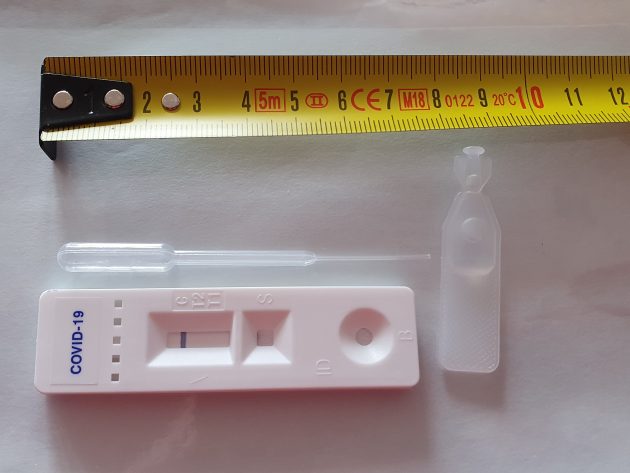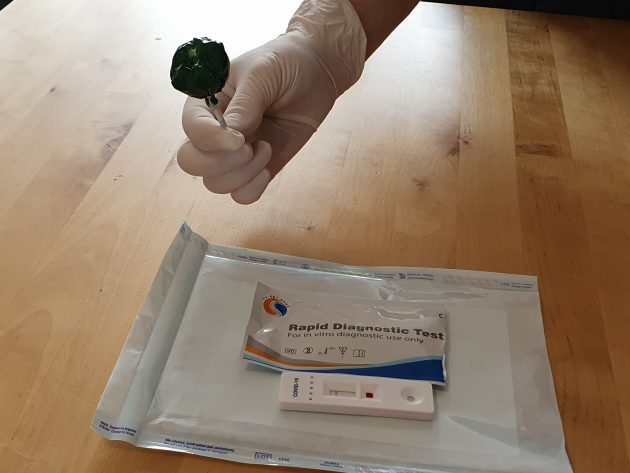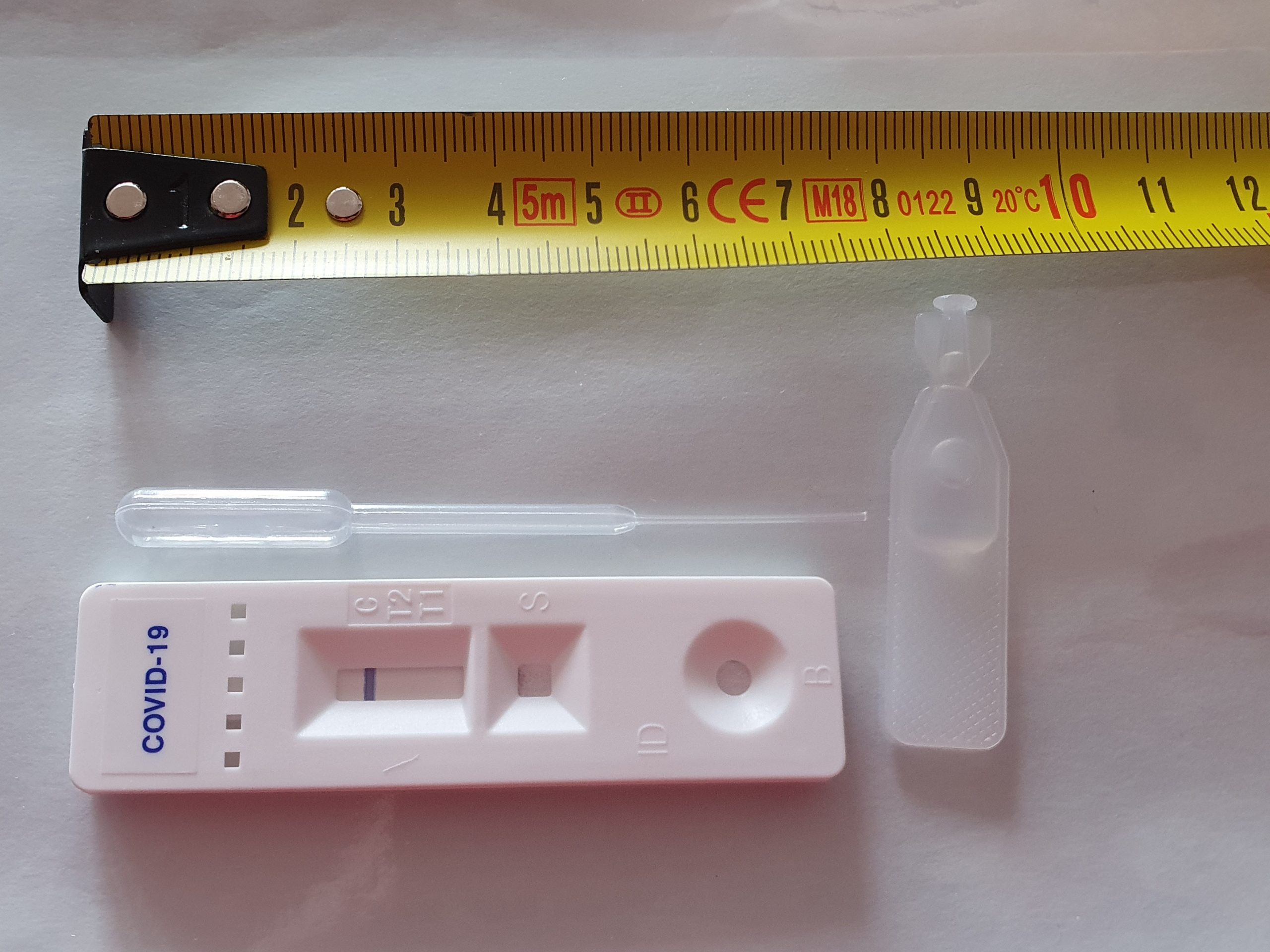Firstly I live in Europe. The Wuhan Virus test I had may not be available in New Zealand.
I had been isolating in the mountains for a couple of weeks. The Girlfriend had to go up to the city. I got a phone call, she had gone into a pharmacy there. They had just that morning received a stock of Wuhan Virus test kits recently arrived from China. They were for sale over the counter. Should she buy one?
Of course I said yes, but buy two. One for you and one for me. With the country in lockdown and all the bars and restaurants closed, there are only so many ‘Couples’ things you can do. So here was our chance to have a romantic night in, testing each other for viruses.
By the way, I asked, how do they work? And how much do they cost?
The tests were single-use needing a pin prick blood sample. Results in 10 minutes. Retail cost NZ$60.
While I was waiting for the test kit to get here, I decided to check if they passed the cough test.
Price of $60. Back in February it was possible to get the virus test at a doctor. The cost for that procedure was $200 and it required a diagnostic laboratory to confirm the results. Sure, that test was probably more comprehensive, but when you strip out the expense of the doctor and laboratory, $60 does seem like there is a massive amount of price gouging going on. That impression was confirmed when I actually saw the test kit.
What about the quick test concept in general. The Guardian, on the 18th March, had this to say about their possible use in Australia…
A study in the peer-reviewed Journal of Medical Virology said the test could return results within 15 minutes, much faster than the current standard testing.
The test – known as the COVID-19 IgG/IgM Rapid Test Kit – is not currently in use in Australia, but the Guardian understands some companies are seeking to supply it onto the market.
A spokeswoman for the Department of Health said the rapid test had “merit” and that there were “no compelling reasons not to use it based on the described science and methodology”.
The test (has been) validated by laboratories in Europe and China. But the spokeswoman said the same would need to occur in Australia.
A spokesman for a company seeking to import the tests into Australia said …
“Our TGA (Therapeutic Goods Administration) consultants have told us that unlike the US and Europe, securing approval will take too long and be very expensive.”
Great, just what you need during a global pandemic: bureaucrats and their box ticking. Surely if it has been approved for use in Europe it could be fast-tracked… But No.
Experts approached by the Guardian said the testing had potential benefits and drawbacks. The testing does not require a laboratory, which could help alleviate pressure on Australia’s pathology services and the rest of the health system.
“These tests will be useful for sure, they could keep infected people out of the health system and they do also provide peace of mind,” he said.
“There are certainly some advantages. If someone thinks they have the virus and can do the test at home in 15 minutes that’s someone who isn’t presenting at a hospital, GP or pathology lab.
“Even if you received a false positive, if you were able to take the precaution of having it backed up with [a traditional test] it would be good. If people received a negative result, they might be less inclined to visit the clinic which is going to free up hospital resources.”
But, he stressed, the tests were not always as reliable as those currently being used in Australia. Because rapid test kits look for antibodies associated with the virus rather than the virus itself, they could record false-negatives if used at the wrong time.
Ok, seems legit, on with the testing.

The procedure was very simple. Extract blood from the test subject. Collect the blood using the provided squeezie tube thing and deposit it into the square hole in the middle of the test kit.
Place a couple of drops of the chemical / liquid in the round hole. Now sit back and wait as you watch the liquid slowly move down the test kit, collect the blood sample and head towards the blue line.
Now the medical bit. The test is looking to see if you have either IgG or IgM antibodies. The internet tells me:
Immunoglobulin G (IgG), the most abundant type of antibody, is found in all body fluids and protects against bacterial and viral infections. Immunoglobulin M (IgM), which is found mainly in the blood and lymph fluid, is the first antibody to be made by the body to fight a new infection.
The presence of any of these antibodies means you have been exposed to the Wuhan Virus. That is indicated by a series of coloured lines appearing in the rectangular part of the test kit. If none of these extra lines appear, and the previous Blue line turns to Red, it means that you are negative.
With these types of kits now readily available, there is simply no reason why anyone who wants to, should not be able to test themselves at home. Particularly when some Governments appear unwilling or unable to carry out an adequate number of tests.
It was literally over in minutes. Almost pain-free, however, the blood taking could have been a bit less brutal. I now have the peace of mind that I am not infected (yet) and as an added bonus I got given a lollipop for being such a brave boy.

If you enjoyed this BFD article please consider sharing it with your friends.

